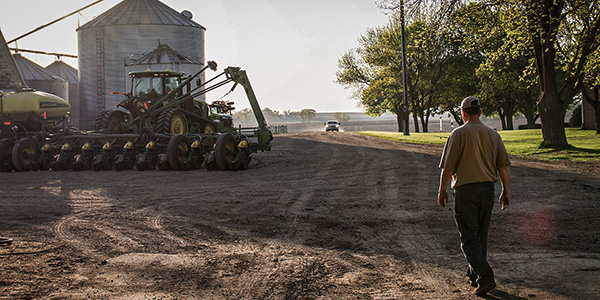AGRONOMICSUPPORT
YOU CAN TAKETO THE FIELD
Corn Planting: When's The Right Time?
It’s April 12 and the phone starts ringing: “Soil conditions are perfect, should I plant my corn today?” I check the forecast for the next 24-48 hours and the current soil temps. The high is 55°F and tomorrow’s high is 45°F. The low this morning was 39°F and the next two mornings are forecasted to have lows of 30°F. Yesterday’s average four inch soil temp was 45-50°F in NW Iowa and it is currently at 44-48°F at 7AM. After looking at all that information my short answer is no, do not plant your corn today. Even if you’re not in NW Iowa, if your conditions are similar, the answer is probably the same: Conditions aren’t fit for planting yet. However, I’m not just going to tell you not to plant. Let’s take a look at what happens to the seed in the first 24-48 hours in the soil and see why it’s not yet fit to plant.
Corn seed will imbibe most of the water it needs to germinate in the first 24-48 hours when it is planted into moisture. Soybean seed, when planted into moisture, imbibes most of the water needed for germination in the first 24 hours. While there is some disagreement about exactly how cold that water must be to cause any injury, most agree that the risk is greatest when that moisture is below 50°F. The current soil and air temperatures and the forecasted air temperature would indicate that the next 48 hours present a greater risk of imbibitional chilling. This also increases the risk for stand loss, potential for increased disease and insect pressure, and uneven emergence. All those factors can weigh heavily on your final stand counts, and ultimately on the yield of both crops.
There have been a lot of articles written on this topic over the years from multiple sources. Here are a few articles that go more in-depth on the topic. One article that has data from 2012 and 2014 says we may not have to be concerned about imbibitional chilling in modern hybrids, if you account for an 85% emergence rate. I do not believe that most growers would be happy with that, and the research did not follow through to report final yields.
University of Nebraska – Lincoln
Purdue University
Cornell University
If you’re in Iowa and want to keep track of the soil temps, check out these resources:
Iowa State University Extension and Outreach
Iowa State University Agronomy Department
After you plant, keep track of your emergence all the way through nodal root development with these tips: Evaluating Plant Stands in Corn
Download a copy of this Technical Bulletin here: Should You Plant Now?






Technical Team Agronomist